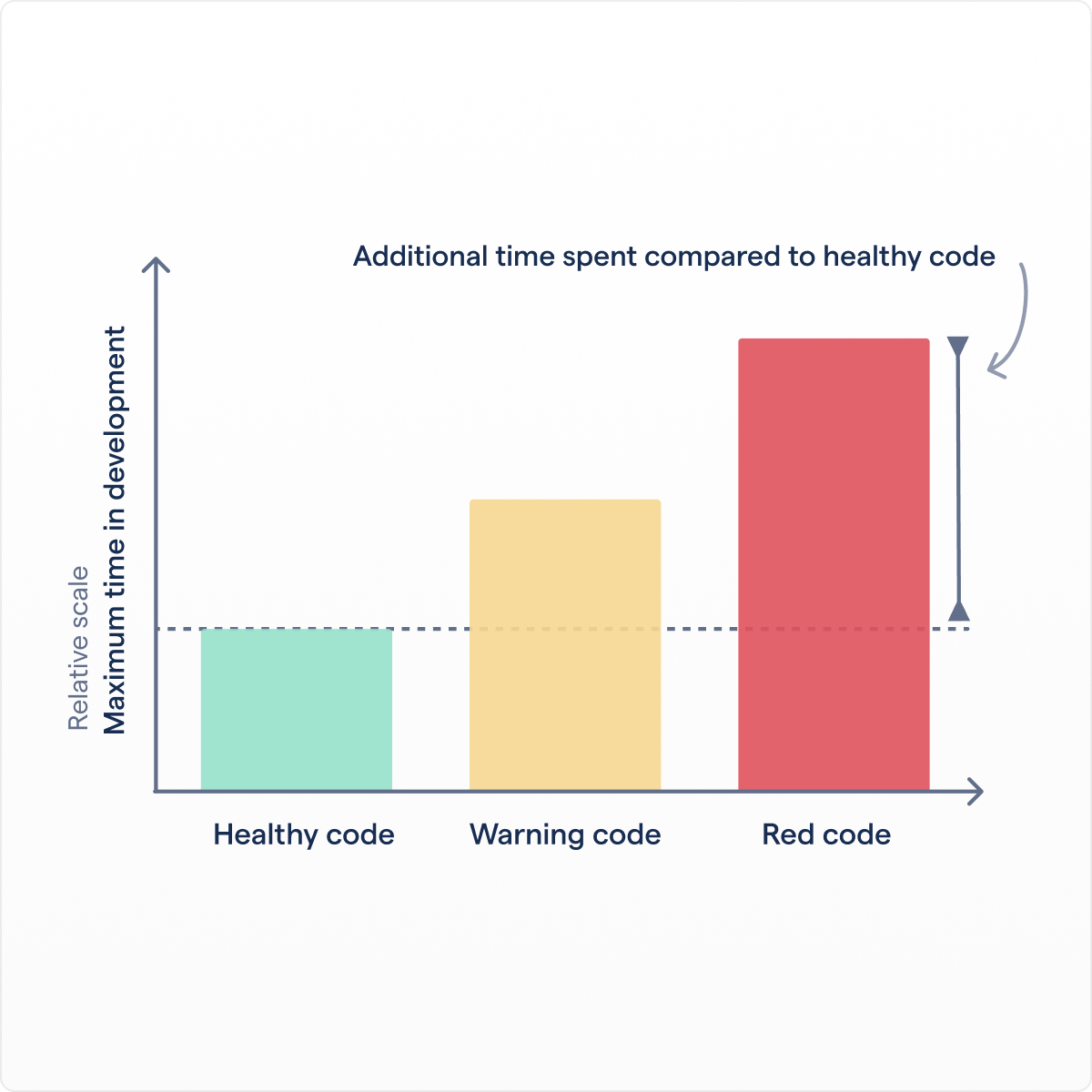AI Guardrails for AI-assisted coding
Automated quality gates for AI coding
An AI assistant can generate code faster than ever but without guardrails, it also generates technical debt and other code quality issues. Set quality standards for AI code with CodeScene's automated process.
Empowering the world’s top engineering teams
AI meets quality
How it works
From AI-generated code to production — CodeScene's quality gates ensure only healthy, maintainable code enters your codebase.
Real-time AI quality gates in your IDE
Quality-check generated code with real-time alerts for any introduced code smells. Automatically refactor with AI-powered suggestions.
Automated Code Reviews
CodeHealth™ checks coach and act as quality gate in every PR/Merge request. Act on recommendations and alerts.
Monitor trends & take action
Track code quality trends with the CodeHealth™ dashboard and respond to any decline before it impacts delivery.
The hidden cost of AI-written code
The rise of technical debt from AI-written code
AI accelerates development—but without safeguards, it quietly builds up technical debt that slows you down later.
Technical debt drains developer productivity
40%
of a developer’s time is lost to technical debt — a number expected to rise as AI coding assistants accelerate code production without proper safeguards.
Rise of technical debt by 2026
50%
of tech leaders will be impacted by high technical debt by 2025, rising to 75% by 2026 due to AI’s rapid growth. Source: Forrester
How it works
AI code quality assurance - 3-step automated process
CodeScene gives you full visibility and control over your AI rollout - ensuring AI accelerates your team, not holds it back.

Step 1 - IDE extension
Real-time alerts when AI code fails quality checks
Real-time Code Health feedback and fixes, helping devs validate AI-assisted code that remains readable, scalable, and maintainable. Code smells are instantly detected. Works with all major languages and integrates seamlessly with Copilot, Cursor, and other AI assistants.
Developers can fix technical debt automatically with our AI-powered refactoring add-on.
Step 2 - Automated Code Reviews
Enforce code quality, set quality gates
Every line of code, AI-generated or handwritten, is reviewed. Teams define their code quality standards, and CodeScene automates enforcement via Pull/Merge Request reviews.
Code Health checks act as both a coach and a quality gate, preventing technical debt or other code quality issues from reaching production.


Step 3 - Interactive dashboards
Monitor AI-generated code, full visibility
Technical leaders and teams need full visibility into the codebase, code health trends, and the ability to react to critical changes. AI-generated code should meet the same quality standards as human-written code.
CodeHealth™ delivers the industry’s only validated technical debt metric, ensuring AI-driven development stays efficient and defect-free.
AI code auality, covered
Stay in control of AI-generated code at every level
From strategic oversight to real-time safeguards—empower leads, teams, and developers to manage technical debt and ensure quality across the AI-driven workflow.
For technical leads
Monitor AI-generated technical debt to ensure long-term code health and development speed.
For teams
Enforce AI code quality with automated reviews that prevent risks and maintain consistency.
For developers
Real-time technical debt prevention in the IDE to write cleaner, more maintainable code.
Industry-leading CodeHealth™ KPI
Metrics you can trust
Code quality is often subjective, but our IDE extension and code reviews rely on the proven CodeHealth™ metric to offer clear, research-based recommendations. This means cleaner code, shorter development cycles and fewer bugs.

Our research proves that healthy code has 15x fewer bugs
15x
Fewer bugs
With healthy code, you can double the speed of your feature delivery
2x
Faster feature delivery
With healthy code, it's nine times more likely that features will be delivered on time
9x
More likely to deliver on time
Guardrails for AI code
Remove AI-generated technical debt
Get real-time code health monitoring for your already implemented AI-coding assistants to prevent any new technical debt entering your codebase. Auto-refactor directly in your IDE.
Faster time to market, improved quallity
Key benefits
You can have it all. Implement guardrails to ensure AI-generated code quality while still benefiting from AI coding assistants.
Validated Code Health KPIs
Set a baseline for your AI-generated code. Our Code Health metric has a proven link to speed and quality, validated through peer-reviewed research.
High quality
Ensure AI-generated code meets same quality standards as human-written code before releasing to production.
Prevent technical debt
Any technical debt or code quality issue is automatically detected by CodeScene's quality gates. Review and apply suggested fixes.
Monitor critical code
Monitor any changes in critical areas of your codebase and if complexity of your code suddenly increases.
Maximize the value of your AI-generated code
Guarantee code quality, fast delivery, and maintainability right from the start.